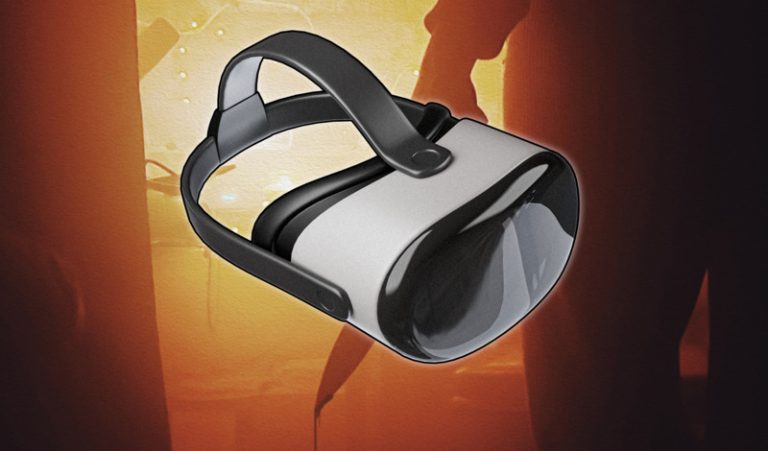Oculus Quest 2 USB C Storage: Expand Your Play!
The Oculus Quest 2 does not support external USB-C storage. Users cannot expand the device’s storage through USB-C connections.
The Oculus Quest 2 stands out in the VR realm for its wireless freedom and self-contained operation. Offering a range of 64GB to 256GB internal storage, the headset caters to both casual and avid users. The absence of USB-C storage expansion highlights the importance of choosing the right internal storage option at purchase.
For those with extensive game libraries or who plan to store a lot of media content, investing in the larger capacity model is crucial. Despite this limitation, the Quest 2 remains a top contender in the market due to its impressive library of games, immersive experiences, and ease of use. Optimizing your purchase decision is essential for an uninterrupted virtual reality experience.
Benefits Of Usb C Expansion
Utilizing a USB C connection to expand your Oculus Quest 2 storage comes with several advantages. Notably, enhanced data transfer speeds allow for swift movement of files, game updates, and downloads. This translates into more time immersed in gaming and less time waiting.
With an expanded library accessible via USB C, accessing your entire gaming collection while on-the-go becomes incredibly convenient. This benefit ensures your favorite titles and new experiences are always within reach, irrespective of your location.
The overall Virtual Reality (VR) experience sees significant improvements too. Faster load times and seamless content management contribute to an uninterrupted and richer VR gaming session. This efficient storage solution means not only an organized virtual space but also a more reliable and robust VR environment.
Choosing The Right Usb C Storage
To ensure seamless performance and optimal compatibility with the Oculus Quest 2, selecting a USB C storage device that explicitly lists compatibility with VR headsets is essential. As the Oculus Quest 2 is a high-end device, using an incompatible storage solution could result in less than satisfactory VR experiences.
| Storage Capacity | Read Speed | Write Speed |
|---|---|---|
| 128GB | Up to 540MB/s | Up to 500MB/s |
| 256GB | Up to 540MB/s | Up to 500MB/s |
| 512GB | Up to 540MB/s | Up to 500MB/s |
| 1TB | Up to 540MB/s | Up to 500MB/s |
Regarding storage capacity, options range widely, with 128GB suitable for casual users and up to 1TB for the immersive VR gaming enthusiasts. For smooth gameplay and quick content transfer, the read and write speeds of the storage device should not be overlooked. A high-speed USB C device, offering read and write speeds of up to 540MB/s and 500MB/s respectively, can greatly enhance the user experience by ensuring quick load times and efficient gameplay recording.
Optimal Storage For Your Vr Games
Selecting the right USB C drive for your Oculus Quest 2 is crucial to enhance your VR experience. Several factors should be taken into account, including storage capacity, read and write speeds, and durability. Opt for drives with a minimum of 5Gbps transfer speed to ensure smooth performance. Furthermore, compatibility with your device is essential; check for drives that are specifically designed for use with VR hardware.
Effective storage management is key to maintaining an organized library of VR games. Regularly archive games that you no longer play and delete old files that are no longer necessary. Utilize cloud storage for backup, and consider external hard drives for additional space if needed. By following these best practices, you can make sure that you have immediate access to your favorite games without compromising the performance of your Oculus Quest 2.
Read More – Oculus Quest 2 USB update mode [How to fix]
Setting Up Your Oculus Quest 2 With Usb C
Connecting a USB C storage device to your Oculus Quest 2 enhances your VR experience by allowing for additional content. Begin by locating the USB C port on the side of the headset. Use a high-quality USB C cable to ensure a stable and swift connection with your external storage. Next, plug the other end of the cable into your storage device.
To facilitate optimal data transfer, ensure that the drive is formatted correctly, preferably to exFAT or FAT32 as these are widely supported formats. Oculus Quest 2 may prompt you to format the drive if necessary. Always transfer files from a source like a PC to the USB C storage before accessing them on the headset to maintain file integrity and performance.
Safely ejecting the USB C drive is crucial to prevent data corruption. On your PC, click the safely remove hardware icon before unplugging the drive. Regularly back up your files and keep your storage device clean from debris to maintain its performance. Inspecting and updating your Oculus Quest 2 regularly will also ensure compatibility and smooth operation with various storage devices.
Never Run Out Of Space Again
Unlock the full capabilities of your Oculus Quest 2 with efficient storage options that ensure you never run out of space. The use of a high-quality USB-C external hard drive allows for expansion of your game library without the worry of exhausting the device’s built-in memory. Keep in mind the necessity for compatibility and speed when selecting a storage solution to maintain seamless performance.
| Storage Solution | Capacity | Features |
|---|---|---|
| Samsung T5 Portable SSD | 500GB – 2TB | Fast transfer speeds, compact design |
| SanDisk Extreme Portable External SSD | 250GB – 4TB | High durability, water and dust resistance |
| Seagate Portable HDD | 1TB – 5TB | Cost-effective, spacious |
Owning one of these top-tier storage solutions will enhance your gaming experiences on the Oculus Quest 2 by providing ample space for all your favorite VR titles. Optimal storage not only means having a larger game library but also ensures that your device runs at peak efficiency. Choose a solid state drive (SSD) for the best performance, ensuring your games load quickly and your system remains responsive.
The Future Of Oculus Quest 2 Gaming
Oculus Quest 2’s storage capabilities are about to reach new heights with the introduction of USB-C storage solutions. This innovation promises to enhance the gaming experience by expanding the device’s storage capacity, allowing for more games and apps to be installed simultaneously. With larger storage options, players can look forward to more immersive VR worlds and less time spent managing space.
The VR community and industry experts alike have embraced this update, sharing their insights on the vast potential for enriched gaming sessions. Recommendations point towards high-speed external SSDs for an optimal experience – a move that aligns with the Oculus Quest 2’s commitment to innovation. This increase in storage is not only a quality-of-life improvement but is also a testament to the system’s adaptability, ensuring that the hardware continues to meet the demands of continuously evolving VR content.

Credit: www.reddit.com
Frequently Asked Questions On Oculus Quest 2 Usb C Storage?
Can Oculus Quest 2 Use Usb-c For Storage?
The Oculus Quest 2 can use USB-C for storage expansion. When connected to a compatible USB-C storage device, it allows for additional space for games and media. However, some applications may not recognize external storage.
Is Oculus Quest 2 Usb-c Storage Fast?
Oculus Quest 2’s USB-C storage speed depends on the connected device. For optimal performance, use storage that supports USB 3. 0 or higher. This ensures quicker data transfer, enhancing gaming, and media access speeds.
How To Connect Usb-c Storage To Quest 2?
To connect USB-C storage to Quest 2, plug a compatible USB-C drive directly into the port on the side of the headset. Ensure that the drive is formatted correctly and restart your Quest 2 for it to recognize the new storage.
What Storage Capacity Does Quest 2 Usb-c Support?
The Oculus Quest 2 doesn’t officially specify a maximum USB-C storage capacity. However, most users successfully use drives up to 2TB, giving ample space for additional games and media content on their devices.
Conclusion
Exploring the Oculus Quest 2’s USB-C storage options expands your VR horizons. Keep in mind, compatibility and speed are key to a seamless experience. Embrace this feature to ensure your gaming and app adventures never hit a roadblock. Dive in, upgrade wisely, and enjoy endless virtual possibilities.





![Oculus Quest 2 USB update mode [How to fix]](https://oculusquestguide.com/wp-content/uploads/2022/04/oculus-quest-2-usb-update-mode-1-768x501.jpg)